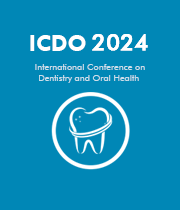Title: The impact of different application methods for flowable composite on microleakage in bulk-fill restorations with proximal box shapes: An in vitro study
Abstract:
The objective of this study was to investigate gingival microleakage resulting from four distinct composite bulk-fill techniques applied to the proximal area: flowable composite with bulk-fill cured simultaneously, flowable composite with bulk-fill cured at different intervals, resin coating followed by flowable composite with bulk-fill cured simultaneously, and bulk-fill alone. Gingival microleakage was evaluated using dye penetration, Infrared spectroscopy (FTIR), and scanning electron microscopy (SEM).
Eighty proximal box-shaped cavities (2x2x4 mm) were prepared on both mesial and distal surfaces of 40 sound extracted human teeth. The teeth underwent etching with 37 percent phosphoric acid, followed by rinsing and drying, before being divided into four groups (n=20 cavities each) to receive bulk-fill (Filtek™ One Bulk Fill Restorative 3M, USA) with flowable composite (Filtek™ Bulk Fill Flowable, 3M, USA) using four techniques: Bulk-fill with flowable composite cured simultaneously (BFST): 1mm flowable composite with 3mm bulk-fill condensed on top then cured. Bulk-fill with flowable composite cured at different intervals (BFDT): 1mm flowable composite cured first, followed by 3mm bulk-fill. Bulk-fill with flowable composite and bonding resin (BFR): a thin layer of bonding resin followed by 1mm flowable composite and 3mm bulk-fill cured simultaneously. Bulk-fill alone (BO): 4 mm bulk-fill. All teeth underwent 500 cycles of thermocycling. After immersion in blue methylene for 24 hours, samples were sectioned mesio-distally and examined using a digital microscope. FTIR was performed to assess the degree of conversion, while SEM was used to evaluate the presence of air bubbles and gaps within composite layers and at the composite-tooth interface.Kruskal-Wallis test revealed significant differences in gingival microleakage among the test groups (p<0.001). The lowest percentage of microleakage was observed in the BFST group (15%), compared to BFDT (80%, p<0.001), BFR (80%, p<0.001), and BO (85%, p<0.001).
Microleakage did not significantly differ between BFDT, BFR, and BO (p>0.05).
FTIR analysis showed comparable results between the top and bottom composite areas in all groups, while SEM analysis revealed gap formation only in the BO group.
In conclusion, applying flowable composite beneath bulk-fill, adapted and cured simultaneously, significantly reduces gingival microleakage in proximal restorations.
Audience Take Away:
Clinicians are expected to readily incorporate these methodologies into their routine clinical practice, deploying them in both immediate patient care settings and as platforms for further investigative endeavors. This strategy is projected to reduce the overall duration necessary for composite material application and mitigate instances of microleakage.



